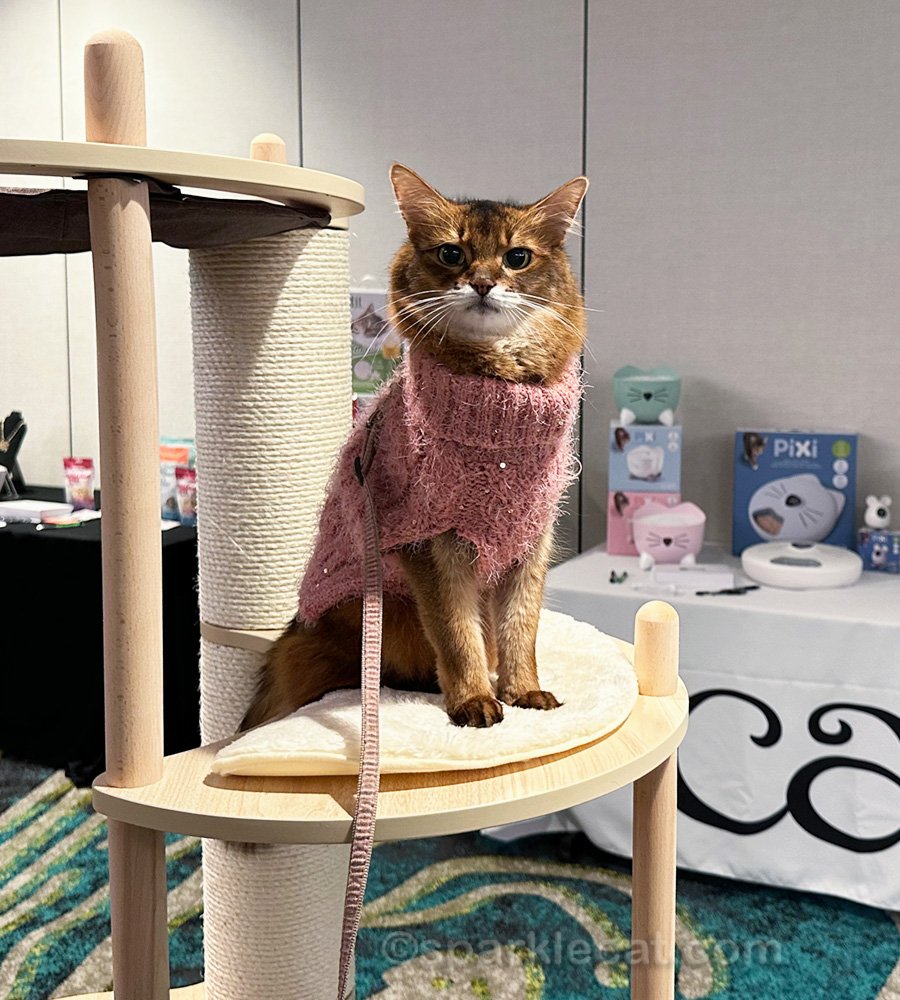Effective Training Techniques for Cats: Myths and Truths

The Potential of Feline Learning
Many cat owners believe that training a cat is an impossible task, but is this really true? The world of cat training is often clouded by misconceptions that can discourage even the most dedicated pet parent. Understanding what works and what doesn’t can be the key to fostering a well-behaved feline companion.
First, let’s address some common myths about cat training:
- Cats can’t learn commands. Many people think felines are too aloof to respond to training. In reality, cats are capable of understanding commands and can learn tricks just like dogs. For instance, a cat can learn to sit, shake a paw, or even come when called.
- Only dogs can be trained. This is a widespread belief that undermines the intelligence of cats. Studies show that cats possess cognitive abilities and emotional intelligence that allows them to learn complex behaviors, making them just as trainable as dogs.
- Training requires a lot of time. While consistency is important, short, engaging sessions can be effective. Training sessions of just 5-10 minutes can help keep a cat interested and responsive, allowing the owner to teach multiple behaviors without overwhelming the animal.
In reality, many techniques exist that can help in shaping a cat’s behavior. For instance, using positive reinforcement has been shown to yield impressive results. This approach involves rewarding desired behaviors with treats, praise, or toys, which encourages the cat to repeat those actions. If your cat uses the litter box properly, for example, immediately reward them with a treat to reinforce this good behavior.
Additionally, recognizing your cat’s unique personality can dramatically enhance the training process. Some cats may respond better to certain types of rewards, such as playtime with a favorite feather toy or a cozy cuddle session. Understanding your cat’s preferences can make training more effective and enjoyable for both you and your pet.
As we explore the myths and truths surrounding effective training techniques for cats, be prepared to discover insights that could transform your approach. Whether you’re trying to teach your cat to use the litter box or perform tricks, understanding these core principles will set you on the right path. Resources such as local animal behaviorists, online forums with fellow cat enthusiasts, and training guides can provide valuable information to assist you in this rewarding journey.

In conclusion, the potential for training your feline friend is not only possible but can also lead to a stronger bond between pet and owner. With the right mindset and tools, even the most stubborn of cats can learn to follow commands and showcase their uniqueness in delightful and surprising ways.
LEARN MORE: Click here for insights on pet food labels
Understanding Positive Reinforcement in Cat Training
When delving into the realm of effective training techniques for cats, one principle stands out: positive reinforcement. This method not only clarifies the training process but also keeps it enjoyable for both the pet and the owner. Positive reinforcement involves rewarding a cat when it engages in desired behaviors, reinforcing their understanding of what is expected. This can be especially beneficial when teaching commands or correcting undesirable behavior.
Utilizing treats is the most common form of positive reinforcement. However, the effectiveness of rewards can differ significantly among individual cats. While some felines may respond best to tasty morsels, others may be more motivated by engaging play or affection. Here are some examples of effective rewards to consider:
- Treats: Small, healthy treats can work wonders. Ensure they are special enough to motivate your cat but keep portion sizes small to avoid overfeeding.
- Interactive Toys: Many cats thrive on playtime. Interactive toys that mimic the movements of prey can be rewarding and serve as an attention-grabbing incentive.
- Praise and Affection: Sometimes, a gentle stroke or an enthusiastic “good kitty” can be all the encouragement your feline companion needs to repeat a behavior.
Short, consistent training sessions are key to success. For example, if you’re teaching your cat to sit, start by holding a treat above their nose and gently moving it upward until their rear end naturally lowers to the ground. When they do so, immediately reward them with the treat while providing verbal praise. This not only reinforces the behavior but also helps solidify their understanding of the command.
Another common myth is the idea that cats are not social learners. Contrary to this belief, studies have indicated that cats can learn from observing both humans and other cats. Watching another cat perform a trick can inspire them to attempt it themselves, highlighting the importance of social interaction in training. Therefore, incorporating friends or other pets during training sessions could yield surprising results.
Moreover, timing is crucial when implementing positive reinforcement. Immediate rewards maintain clarity about what behavior is being reinforced. If you delay offering a treat until a minute later, your cat may become confused as to which action warranted the reward. This underscores the importance of being attentive and ready to reward desired behaviors immediately.
Incorporating positive reinforcement techniques can transform the training experience for your cat. By understanding what motivates your pet, utilizing rewards effectively, and ensuring timely reinforcement, cat owners can foster an environment conducive to learning. This paves the way toward not only teaching commands but also enhancing the valuable bond shared with a feline buddy.
Effective Training Techniques for Cats: Myths and Truths
When it comes to training cats, there are numerous myths that can misguide even the most passionate feline owners. Contrary to popular belief, cats can be trained much like dogs, although the methods must be tailored to their unique personalities and instincts. Research indicates that understanding feline cognition enhances training success.
One of the biggest misconceptions is that cats cannot be trained to obey commands or perform tricks. In reality, cats respond well to positive reinforcement techniques, which involve rewarding desired behaviors instead of punishing unwanted ones. Treats, praise, and affection serve as effective reinforcements, making the training process enjoyable for both the cat and the owner.
Moreover, another myth suggests that cats are inherently aloof and indifferent; however, this notion underestimates their ability to form bonds with humans. Spending consistent time engaging your cat in training activities can significantly improve their behavior and strengthen the emotional connection between you and your pet. Techniques such as clicker training have gained popularity, as they provide immediate feedback and help in establishing a clear communication system.
It’s essential to dispel myths surrounding the notion that only specific breeds can be trained effectively. While some breeds may display more eagerness to learn, with patience and consistency, any cat can be trained to follow basic commands or establish routines, demonstrating that effective training techniques work across the feline spectrum.
The journey of training a cat not only enriches their lives but also enhances your own experience as a pet owner. Understanding these truths can lead to a more harmonious household where cats exhibit desirable behaviors, ultimately resulting in fewer behavioral issues and greater companionship.
| Category | Key Features |
|---|---|
| Positive Reinforcement | Encourages good behavior through rewards. |
| Bonding and Communication | Strengthens the owner-cat relationship, enhancing mutual understanding. |
In conclusion, the journey of training cats entails shattering prevalent myths while embracing effective evidence-based techniques that resonate with a cat’s natural instincts. Educating oneself on these topics opens the door to a more fulfilling relationship with your furry companion.
DISCOVER MORE: Click here to learn about pet food labels
Debunking Common Myths About Cat Training
As cat owners embark on the journey of training their feline friends, they often encounter a plethora of myths that can hinder their approach and efficacy. Understanding the truths behind these misconceptions can significantly impact the success of training sessions. One prevalent myth is that cats cannot learn commands like dogs. While it is true that cats may not have the same social structure as dogs, they are capable of learning commands and even tricks. Cats possess unique intelligence and adaptability that can be harnessed through patient training and consistent positive reinforcement.
Another common belief is the notion that cats are too independent to be trained. This perspective largely stems from the observation that cats, unlike dogs, often exhibit a more aloof demeanor. However, this independence is part of what makes cat training so intriguing. Cats can train themselves, adapting to environmental cues and learning through trial and error. When trained with patience and respect for their autonomy, many cats respond positively and show enthusiasm during the learning process.
Moreover, some cat owners believe that punishing their cat for undesirable behavior can lead to effective training outcomes. This notion is fundamentally flawed, as punishment tends to instill fear rather than foster learning. Studies show that cats trained through negative reinforcement are likely to develop anxiety or aggression. Instead, redirecting a cat’s focus to more appropriate behaviors and rewarding those actions creates a safe and encouraging space for learning. For instance, if your cat is scratching the furniture, divert their attention to a designated scratching post. Reward them with praise and treats when they use the post instead.
Understanding the individual personality of your cat is equally important when addressing training techniques. For instance, while some cats are motivated by food, others may prefer physical affection or engagement with toys. Assessing your cat’s preferences will enable you to tailor training methods effectively. As reported by the ASPCA, cats thrive on routine and may feel more comfortable with activities they can anticipate. Sticking to a regular training schedule can contribute to maintaining their interest and focus.
Additionally, age can play a significant role in how a cat learns. Kittens are particularly impressionable and can absorb training more rapidly than adult cats. Nevertheless, older cats are equally capable of learning new tricks or adapting their behaviors. The belief that it’s “too late” to train an older cat is a myth that deters many pet owners from attempting to modify their cat’s habits. In reality, every cat—regardless of age—has the potential to learn and benefit from training when approached with care and respect.
Socialization is another pivotal factor in effective cat training. Exposing your cat to varied environments, people, and even other animals can help them develop confidence and adaptability. Proper socialization may open doors to new learning opportunities, thus enhancing the training experience. Consider organizing playdates with other cat-owners or taking your cat out on supervised outings. Such experiences can lay the groundwork for successful training results.
As we navigate through the intricate world of cat training, debunking these myths can pave the way for more effective and enjoyable training practices. Recognizing the unique qualities of cats— from their intelligence to their individual preferences—is key to unlocking their potential as learners. With continued dedication, patience, and a little creativity, cat owners can shape a fulfilling training journey, enhancing their bond with their furry companions.
DISCOVER MORE: Click here for essential tips on your pet’s nutrition
Final Thoughts on Training Your Feline Companion
In conclusion, understanding the effective training techniques for cats is essential for nurturing a harmonious relationship between you and your furry friend. By dismantling the myths surrounding cat training, we open ourselves to a wealth of knowledge that can enhance both the training process and the bond with our pets. Recognizing that cats can learn commands, adapt to routines, and thrive within social settings allows owners to approach training with greater confidence and creativity.
It’s crucial to remember that every cat is an individual, with its own preferences and personality traits that influence learning. Thus, finding what motivates your cat—be it treats, play, or affection—will greatly enhance training success. Additionally, providing consistent, positive reinforcement fosters a safe learning environment that encourages exploration and adaptability.
As we embrace the journey of training our cats, we should keep in mind that age and social interactions significantly impact learning outcomes. The notion that training is impossible for older cats is a misconception; with the right approach, even seasoned felines can embrace new skills and tricks. Ultimately, whether you are working with a mischievous kitten or a wise elder, patience, empathy, and routine are keys to successful training.
As more cat owners recognize the truths behind effective training techniques, we can create an informed community that celebrates the intelligence and joy of our feline companions. So, gather your treats, prepare your toys, and embark on this fulfilling training adventure—your cat is ready to learn!


